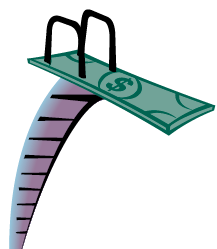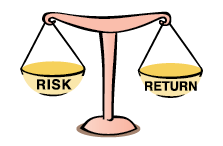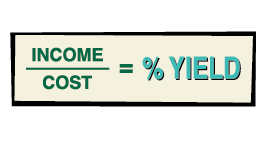Articles
Pillars of Investment Success
If you concentrate on the principles, you’ll have the elements of an investment strategy. As you make individual investment decisions,…
If you concentrate on the principles, you’ll have the elements of an investment strategy.
As you make individual investment decisions, you’ll want to ask where each investment fits in your overall asset allocation and diversification strategies. You’ll want to evaluate the yield the investment may provide and the level of return it’s reasonable to expect. And you’ll want to assess how volatile the investment is likely to be and what risks you’ll be taking in adding it to your portfolio.
Taking these steps doesn’t guarantee that you’ll achieve the results you want, but it should help protect you from avoidable mistakes.

DIVERSIFICATION is making several different types of investments rather than just one or two

ALLOCATION is deciding what percentage of your portfolio goes into which categories of investment

VOLATILITY is how much and how quickly the value of an investment changes

RISK includes all the reasons you may have a loss or a weak return

RETURN is what you get back, based on what you invest, usually measured on an annual basis

YIELD is the income you receive as a percent of what your investment cost you
TIME AND RISK
The range between an investment’s high and low price over a period of time—such as a year—is a measure of its volatility. The smaller the percentage of change, the less volatile the investment is.
Volatilty poses the biggest risk to investment values in the short term. If you hold onto a stock when the price drops, the losses may be reversed and the value of your shares may reach or exceed their previous high, though that isn’t guaranteed. Or, if you hold bonds until they mature, changing market values have no impact on what you earn.
Another way to deal with volatility is to capitalize on it. If an investment increases dramatically in value, you can sell it and make another purchase. If the price drops in the future, you might buy it again and wait for the cycle to repeat itself. In fact, some stock investors consider falling prices a buying opportunity that will let them take full advantage of future gains. The risk, of course, is that those gains can’t be guaranteed even if your research shows the company to be a sound investment.
TWO STRATEGIC APPROACHES
You might decide that the way to meet your long-term goals is to put money into equities you expect to grow in value. This strategy helps you concentrate on specific types of investments, first on equities in general and then more narrowly on those that seem likely to perform best over the long haul.
If you are investing to meet both long- and short-term goals, you might select stocks and stock funds that strive to provide both growth and income, in addition to those emphasizing growth alone. By reinvesting your dividends and capital gains, it’s possible to build your investment base more quickly. Of course, stocks and stock funds are more volatile than some other types of investments. So you may lose money if the market takes a sharp downturn.
If you’ve retired and want to begin collecting income from your portfolio, you may want to shift some of your assets to income-producing investments, such as bonds and dividend-paying stocks. Any strategy, however, requires attention to basic details: understanding risk, volatility, diversification, and asset allocation, and evaluating yield and return.
KEEPING ON TRACK
Picking the right investments is only the first step in achieving your financial goals. You also have to monitor their performance regularly, asking whether these investments are still right for your portfolio as your goals shift and your lifestyle changes. And—this is where many investors falter—you have to be ready to make adjustments, sometimes even major changes, when you redefine your goals, or when the investments you’ve made aren’t performing the way you expected.
It can be hard to move in new directions. If you feel comfortable relying on the investments you already know—perhaps CDs, money market accounts, or stock in the company you work for—there’s always the temptation to stick with them. And while they may have their place in your investment plan, tying up your money in one or two places exposes you to greater investment risk.
A DISTICTIVE DIFFERENCE
Saving and investing are both ways to meet financial goals, but they’re not the same:
Saving is holding money, usually in bank accounts or money market funds, for a specific short-term purpose.
Investing is buying things of intrinsic value—stocks, bonds, and real estate, for example—that have the potential to provide income or increase in price, or both, over the long-term.
Though your savings earn interest, they may actually shrink in value over time. That’s because the interest you earn is rarely more than the rate of inflation. On the other hand, insured savings, such as money market accounts and certificates of deposit (CDs), are well suited for meeting short-term goals, such as the down payment on a home you hope to buy within a year or two, since your principal is safe.
There’s also a middle ground between saving and investing, where short-term bond funds and US Treasury bills fit. You generally earn more than on insured accounts, but the market values of these investments fluctuate as interest rates change.